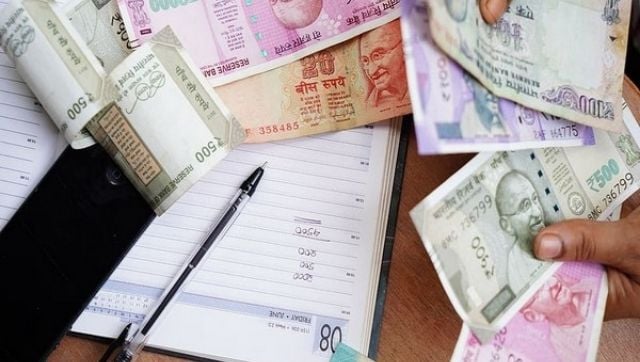Increase liquidity flow to fintech and smaller NBFCs

Representative image: ANI
The new age technology has driven the fintech industry’s rapid growth and expansion in recent years. The industry worldwide has grown significantly since the onset of the COVID-19 pandemic, which restricted mobility and catalyzed digital adoption.
The global fintech market is valued at $112.5 billion in 2021 and is projected to reach $332.5 billion by 2028. It is expected to grow at a compound annual growth rate (CAGR) of 19.8 percent over the forecast period. India has been one of the leading countries for fintech innovation and disruption. Also, over 2,200 companies in India work in the fintech segment, of which 19 percent are in the payments sector, followed by lending and then wealth-building technology.
The Indian fintech market is recognized as the fintech hub globally and is estimated to reach assets under management (AUM) of $1 trillion by 2030, a 10-fold increase from its size of around $100 billion in 2021. At the same time, the industry was expected to generate revenue at $200 billion, a 10X jump from $20 billion in 2021, according to an industry report.
The road to revenue generation is still challenging
Although the fintech business has had an impressive journey, the road to monetization remains challenging. Using the current user base to deploy new financial products and expand the addressable market from digital to “phygital” will likely lead to the necessary business model modifications for a relatively mature and sustainable fintech industry. In addition to the guidelines in the digital lending space, the sector is further affected by several other challenges, including the ongoing funding winter.
Benefits of UPI Payments
The development is driven by UPI, credit and debit cards. The benefits of UPI payments extend beyond metros to Tier 2 and Tier 3 cities as well as rural areas. The key growth drivers for UPI, which is fast becoming the de-facto mode of payment for millions, are untapped market potential, improved digital infrastructure, and, most crucially, the simplicity, trust and legitimacy of digital payment services. Due to the active use of digital payments for OTT subscriptions, in-store purchases (with QR code), online shopping and other purposes by non-metros, Tier 2 and 3 cities are fast becoming the new growth hubs for UPI transactions in country. They often outperform Tier-1 markets in terms of month-on-month growth.
Focus on disruptive, scalable platforms of solutions
The mobile penetration in India, coupled with the size and depth of SMBs, is an extraordinary hybrid of a multitude of potentially disruptive and scalable platforms of solutions that can undoubtedly expand to global markets in the future. As an industry, this is where we need to focus as it will help us contribute to the growth of FinTech in India. There is a need for traditional players to collaborate with new era companies that seek to redefine the financial industry with their innovative and customer-friendly solutions.
Flexible company legislation is needed
The industry expects the Union Budget 2023 to further strengthen India’s financial ecosystem and propel the burgeoning fintech sector towards a prosperous future. An additional benefit for the sector would be flexible company legislation. Tax breaks and incentives will in turn encourage fintech startups to focus on innovation, and invest in research and development to build new disruptive products that can further drive the fintech industry.
Fintech and NBFCs working to bridge the gap and improve access to financial products among the unbanked population must be supported with tax incentives to achieve the goal of building a strong, inclusive financial system across the country.
Partnership between banks, NFCS, fintech is needed
Favorable initiatives and support measures around facilitating stronger partnerships between banks, NBFCs and fintech will act as a force multiplier to expand the reach of financial services across all corners of the country while maintaining the right balance between innovation and regulation. Budget allocations to grow the digital payments ecosystem and further strengthen our world-leading digital infrastructure will strengthen the fintech industry in line with the government’s Digital India vision.
It would be great if the government considers rolling out measures to increase liquidity flow to fintech and smaller NBFCs. This, in turn, will facilitate access to credit for the underserved, thereby promoting financial inclusion in the country. I also believe that to nurture the thriving startup ecosystem, the government should provide significant tax relief to startup employees regarding the burden of Employee Stock Ownership (ESOPs) on employees.
I hope that the announcements made in the Union Budget 2023 will further contribute to the growth of the digital payments and fintech industry in India and bring us closer to the vision of building a cashless economy.
The author is CEO (Interim) & CFO, BharatPe, a payments company – @bharatpeindia. Views expressed are personal.
Read all Latest news, Popular news, Cricket news, Bollywood News,
India news and Entertainment news here. Follow us on Facebook, Twitter and Instagram.


